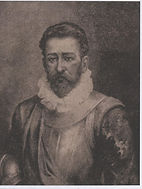
History and Demographics
Paragraph
Costa Rica spent many years seeking freedom before becoming an amazing country known for its biodiversity, beaches, volcanoes, wildlife, and cultures. It all started between 8,000 and 2,000 BCE when people arrived and settled on the land of Costa Rica. These people were nomadic hunting-gatherers who traded with civilizations such as Olmec, Maya, and Colombian, and later built villages with the help of indigenous societies such as Chorotega and Chibcha. Later, in 1502, Christopher Columbus came to the land of Costa Rica while on his fourth voyage of the Americas. There, he revised his ships and named the land “Rich Coast” because he was so impressed by the gold and jewels that the natives wore. During the year 1562, Costa Rica became a Spanish colony and appointed their first general, Juan Vásquez. He founded the first capital and made a clear settlement of Costa Rica, where the land later planted cacao, tobacco, and sugar cane from Spanish settlers. After gaining independence from Spain in 1821, Costa Rica joined the United Provinces of Central America in 1823. There, they became disappointed with the disagreements of the other four states involved, so they removed themselves from the federation in 1838. Moving on to the late 18th and early 19th centuries, when coffee was introduced, it became a big hit in Costa Rica, making people build a railroad from San José to Limón. A businessman named Minor Cooper later introduced bananas, which made coffee and bananas a big attraction for immigrants from Europe. Fast forward to the most recent election in 2018, the biggest debate was whether same-sex couples could marry. In 2018, there was a ruling from the Inter-American Court of Human Rights that said that countries that were part of the American Convention on Human Rights, which includes Costa Rica, should allow same-sex marriage. A presidential candidate named Fabricio Alvaraade Muños disagreed and pushed back during his campaign until he eventually lost the election to a liberal presidential candidate named Carlos Alvarado Quesada.
Today, Costa Rica has a diverse population spread throughout the country. Around 80% of Costa Rica’s population comprises European descendants, making Costa Rica have the biggest Spanish descendant population in all of Central America. With 20% of the population left, the next biggest group is mestizos, people with a combination of indigenous and European ancestry who make up almost 20% of the population. Costa Rica also has a very small African and Chinese population, and less than 1% of the population is indigenous. Spanish is the main language spoken in Costa Rica. Still, English is also spoken alongside Limonese Creole and six indigenous languages such as Bribí, Cabécar, Maléku Jaíka, Boruca, and Térraba which are part of the Chibchan language group.
Pictures

Christopher Columbus

Coffee Beans
.jpg)
Juan Vásquez

Bananas
History Timeline
Citations
---. “Juan Vázquez de Coronado.” Wikipedia, Wikimedia Foundation, 16 Jan. 2025, en.wikipedia.org/wiki/Juan_V%C3%A1zquez_de_Coronado.
Harvard T.H. Chan. “Bananas.” The Nutrition Source, 15 Aug. 2018, nutritionsource.hsph.harvard.edu/food-features/bananas/.
Karnes, Thomas L, and Gary S Elbow. “Costa Rica | History, Map, Flag, Climate, Population, & Facts.” Encyclopedia Britannica, 26 July 1999, www.britannica.com/place/Costa-Rica/Sports-and-recreation. Accessed 18 Feb. 2025.
Nast, Condé. “If You Care about Your Coffee, Then You Should Know How to Store It.” Bon Appétit, 8 Oct. 2015, www.bonappetit.com/drinks/non-alcoholic/article/storing-coffee.
to, Contributors. “Aspect of History.” Wikipedia.org, Wikimedia Foundation, Inc., 25 Feb. 2002, en.wikipedia.org/wiki/History_of_Costa_Rica. Accessed 10 Mar. 2025.
“Christopher Columbus - Wikipedia.” Wikipedia.org, 2020, en.wikipedia.org/wiki/Christopher_Columbus. Accessed 10 Mar. 2025.
“World Geography & Culture Online - History Page.” Infobase.com, 2021, fofweb.infobase.com/wgco/History.aspx?Page=11&iPin=M0019717. Accessed 19 Feb. 2025.